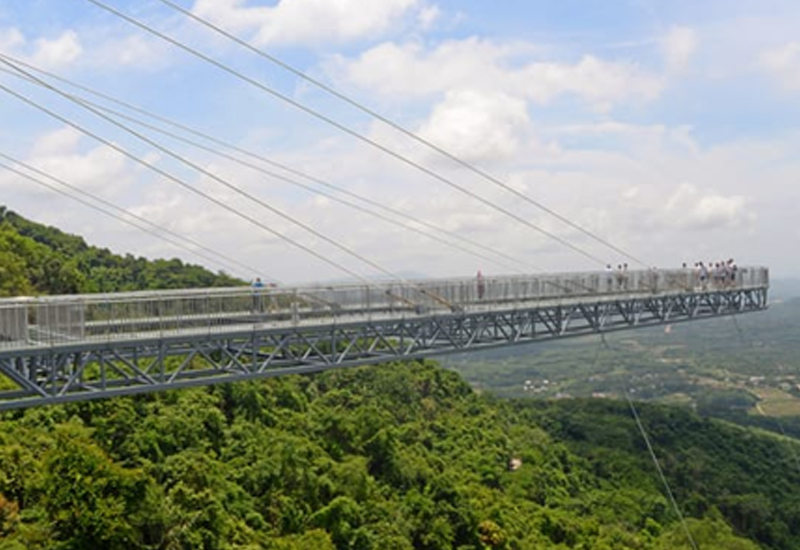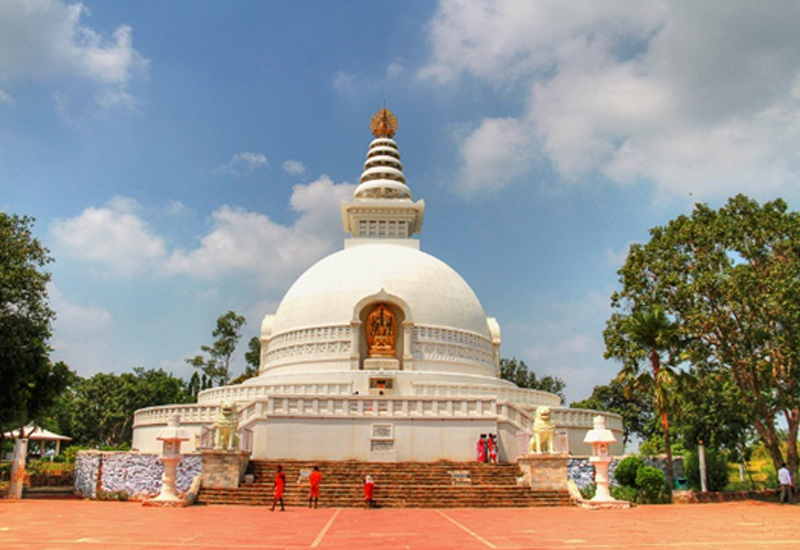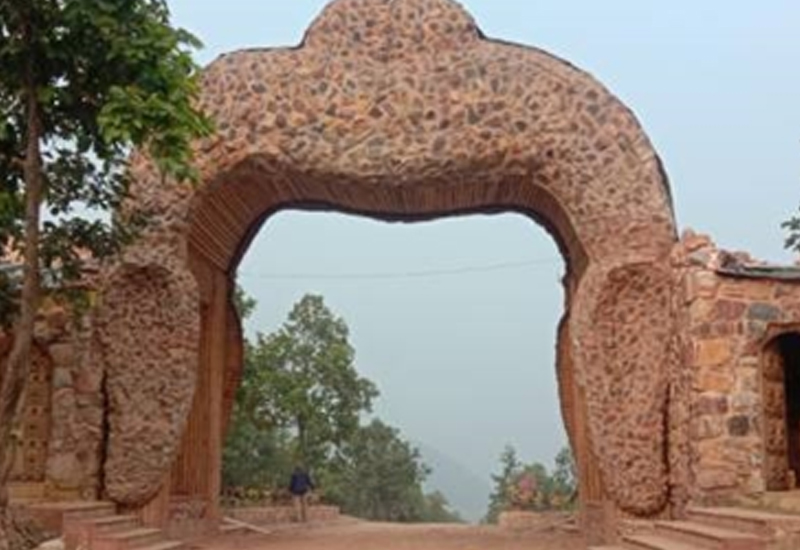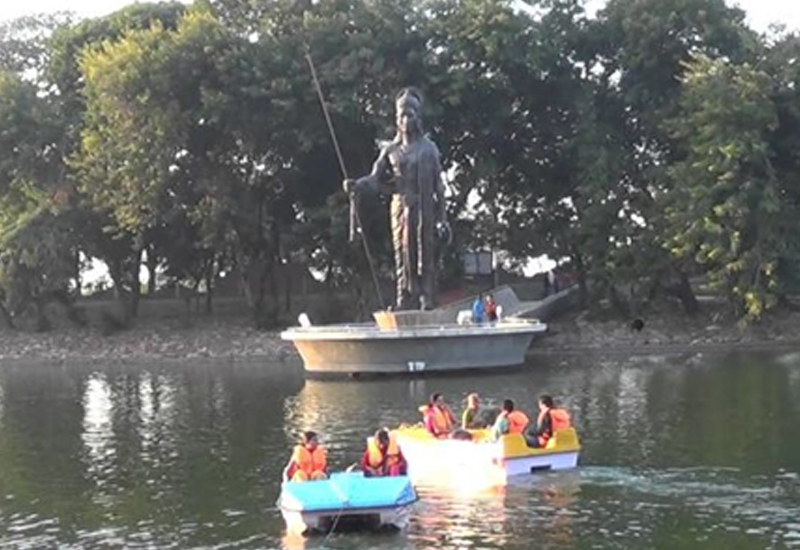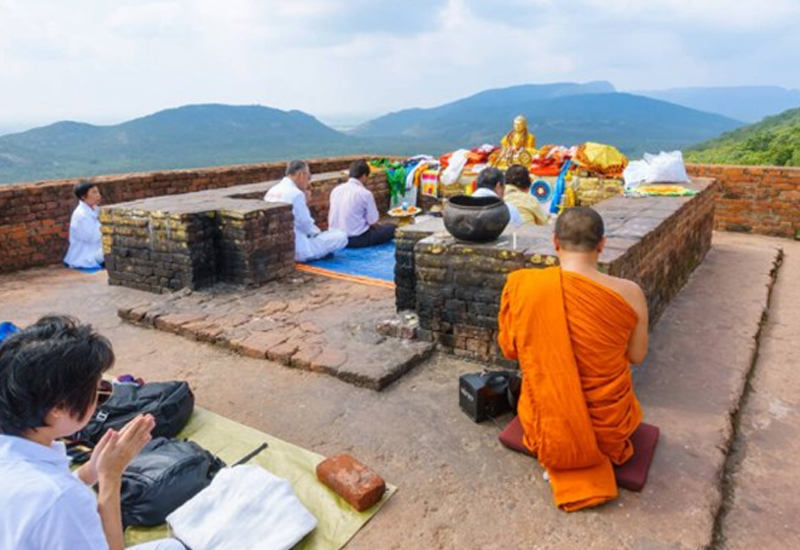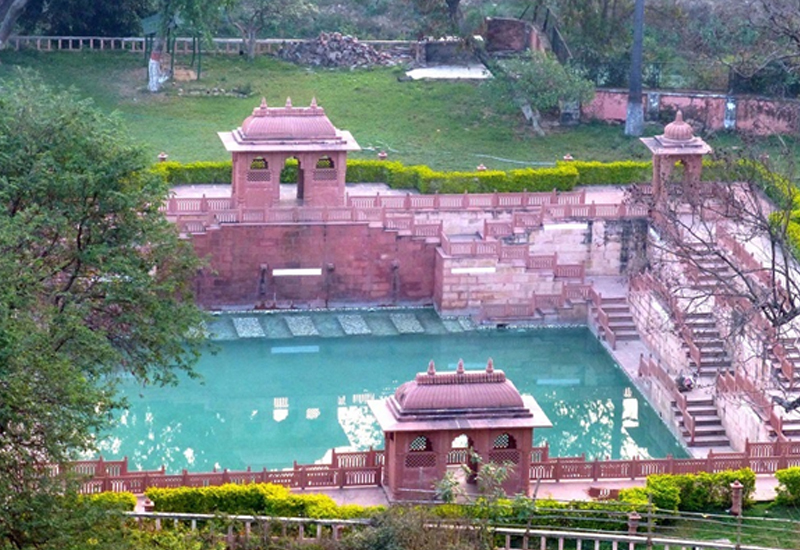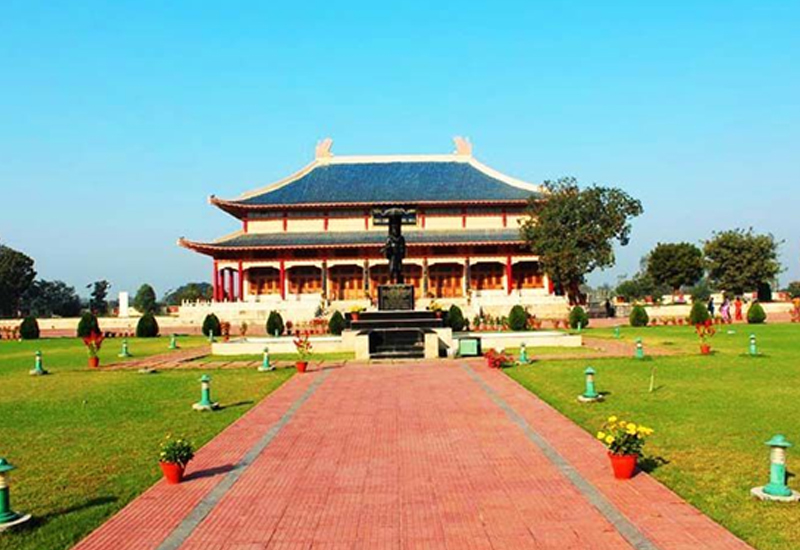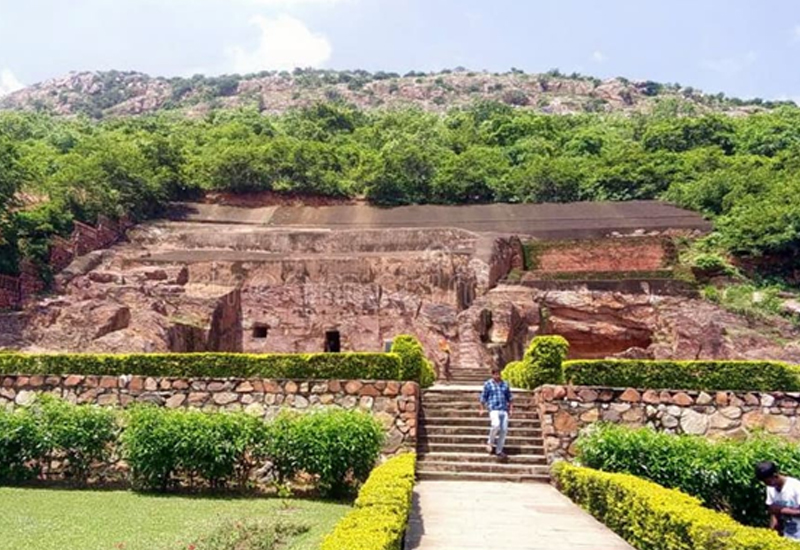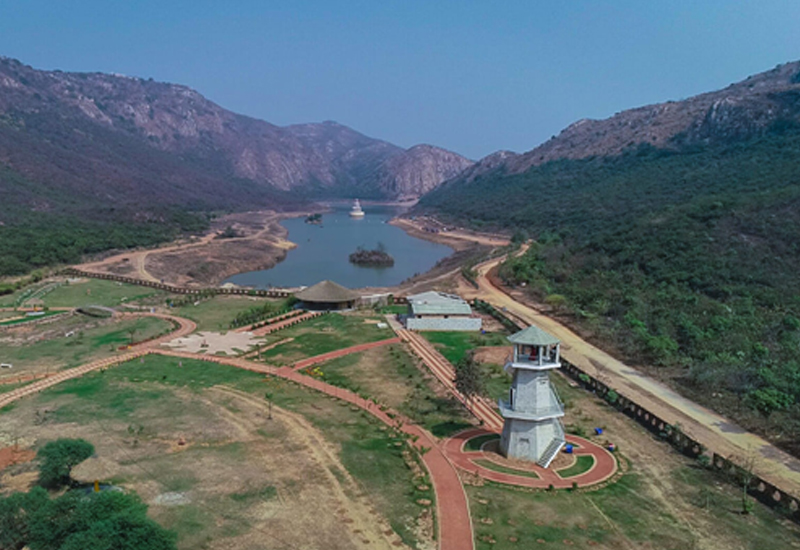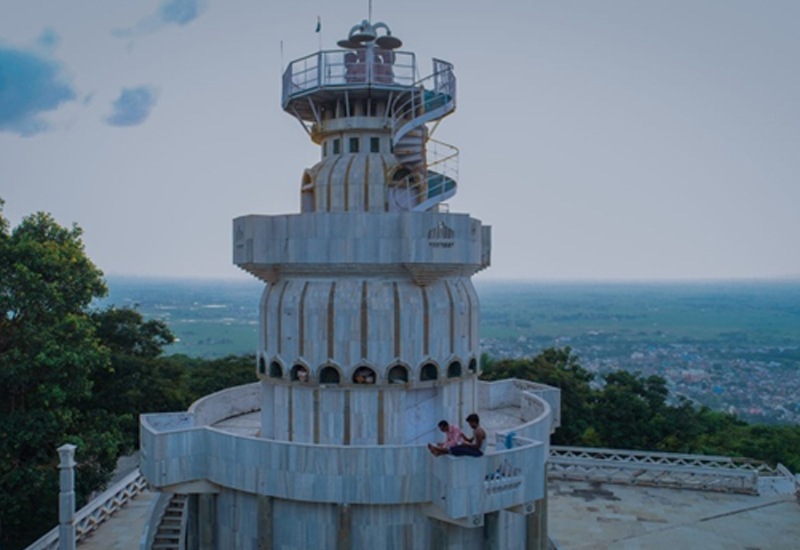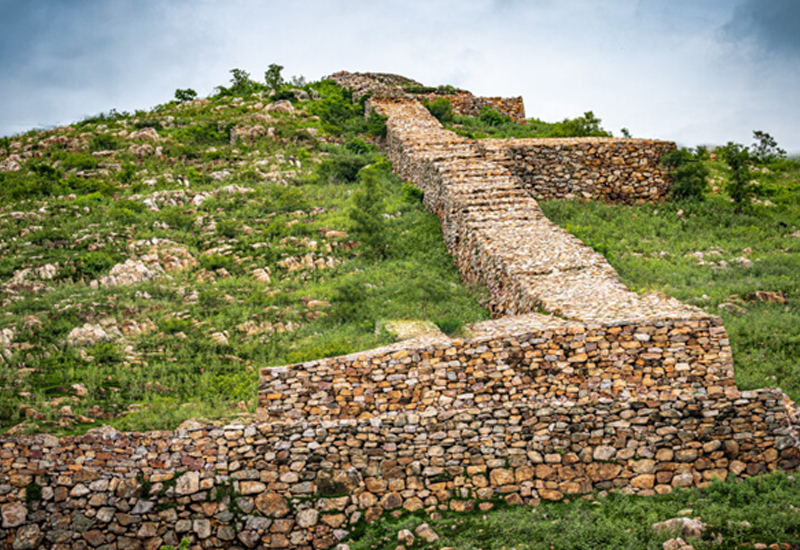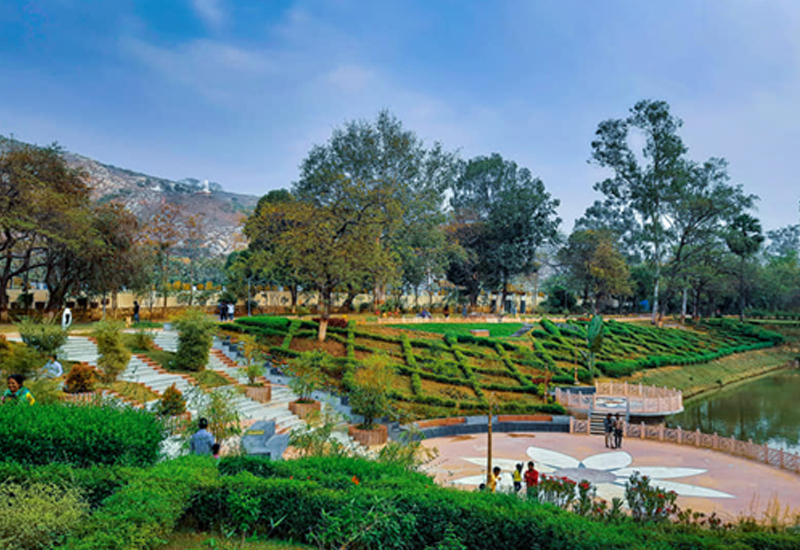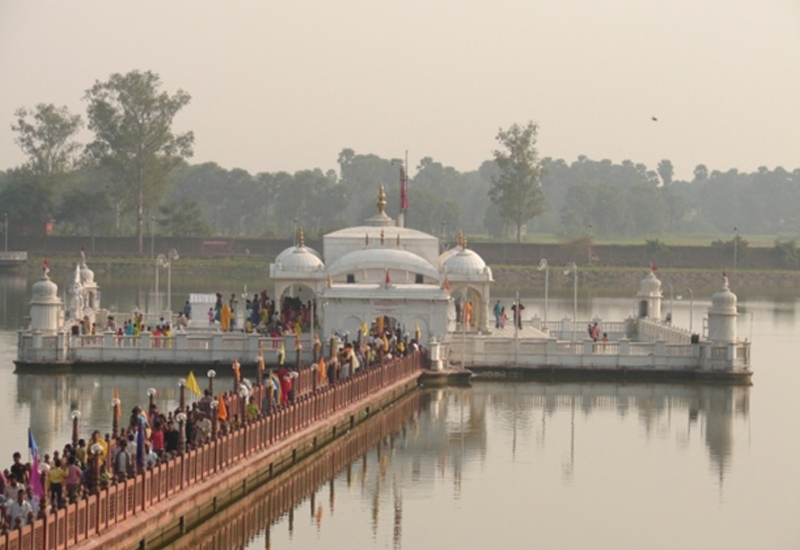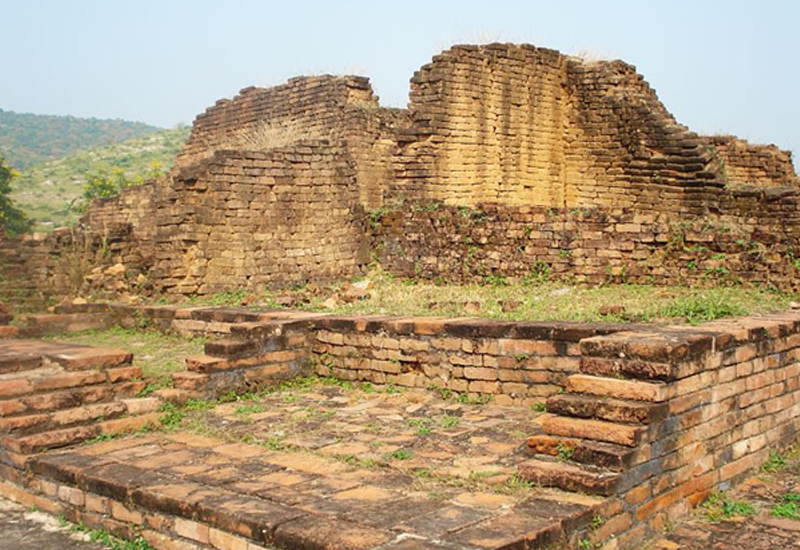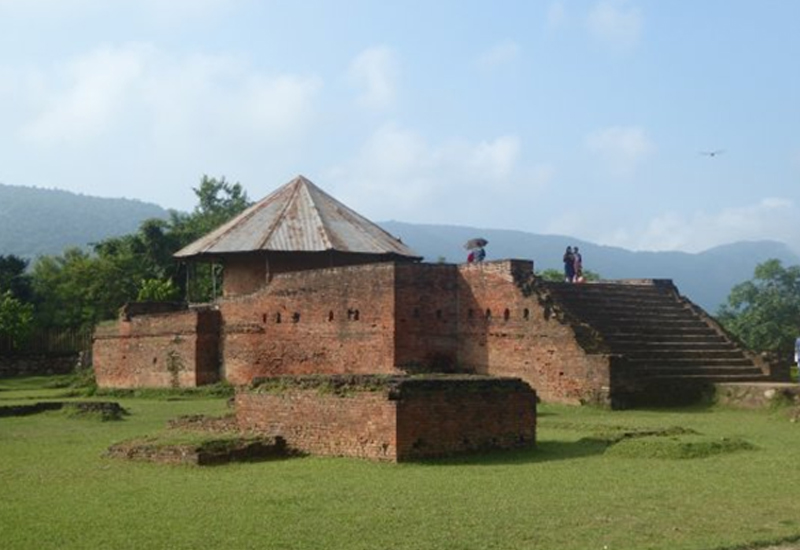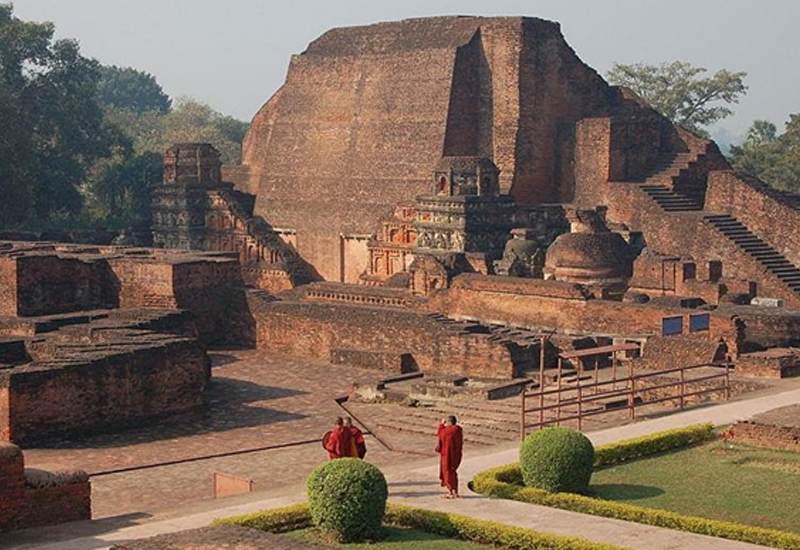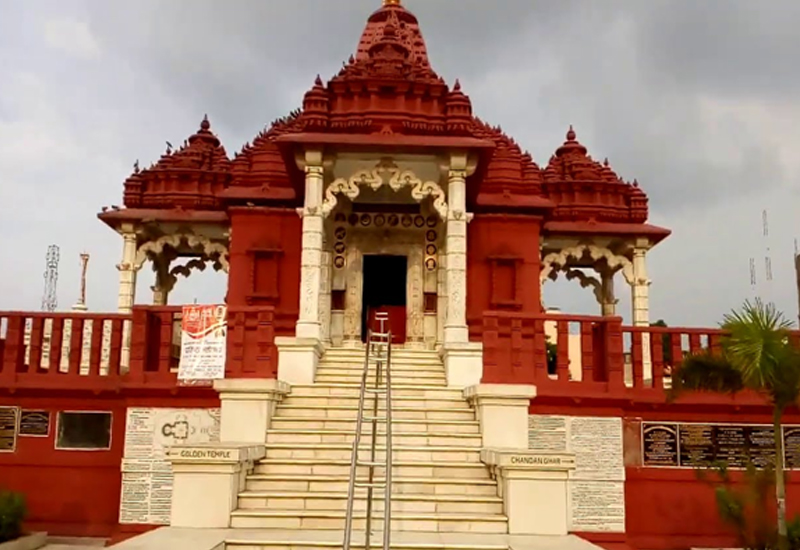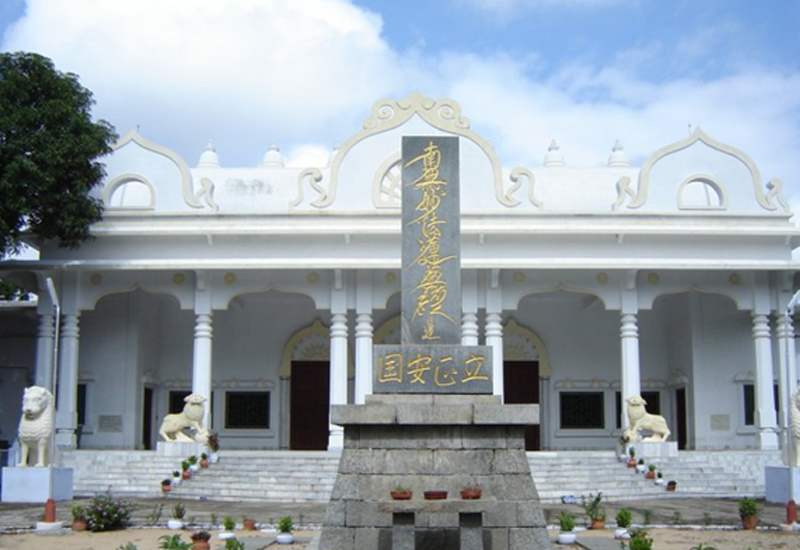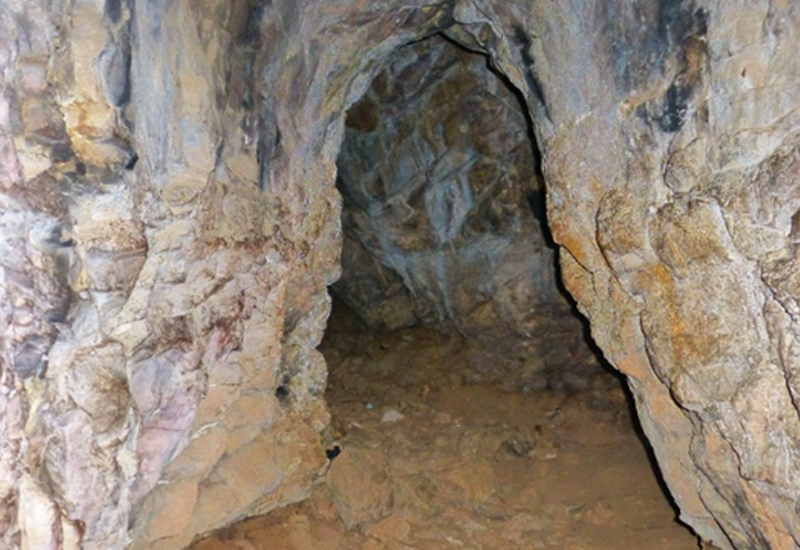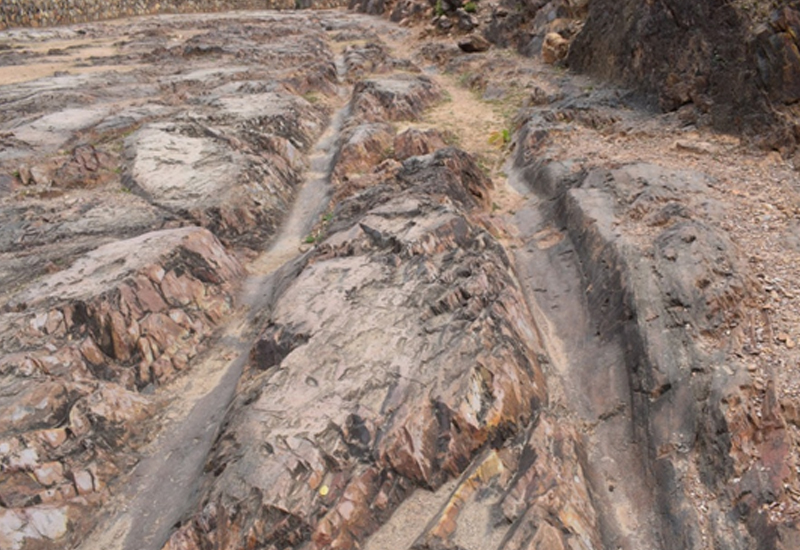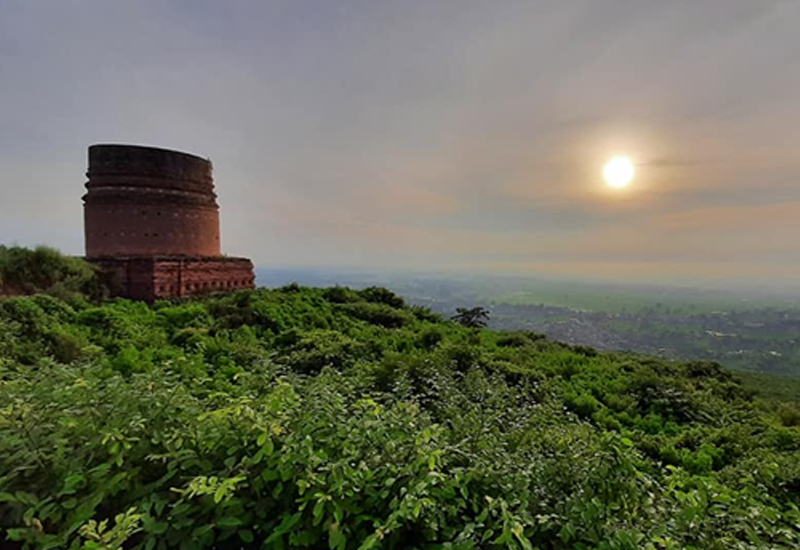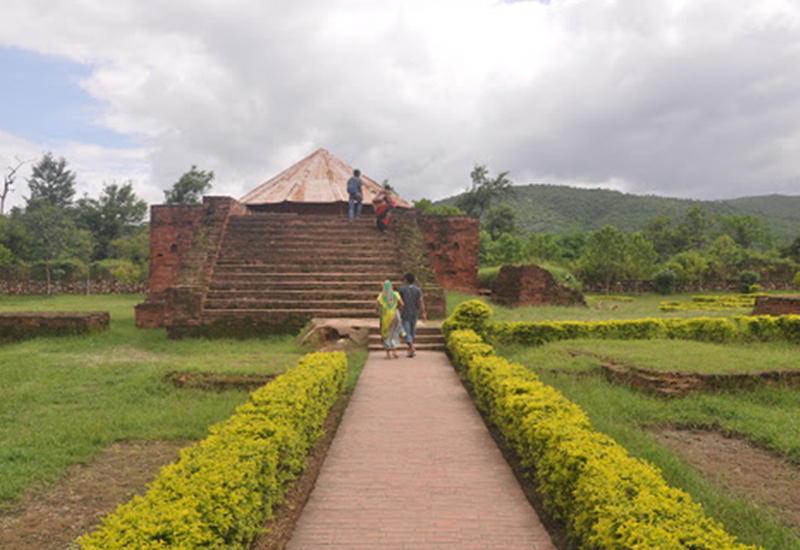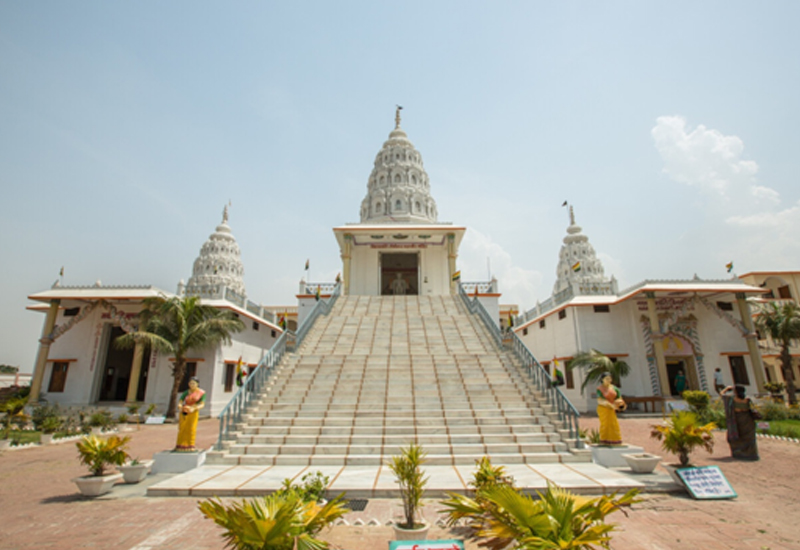1. Glass floor bridge
Letting you experience the thrill of sky walking, a glass bridge is being laid amidst five rocky hills in Rajgir in Bihar. Estimated to be 85 feet long and 6 feet wide, this bridge will have the capacity to accommodate a total of 40 tourists at a single time.Not only sky walking, but the first glass bridge of Bihar will also come accompanied with a number of other adrenaline-fueled attractions. It will let tourists enjoy nature safari within the 500-acre Budh Marg. A new and advanced ropeway is on its way, which will feature 18 glass cabins.
2. Vishwa Shanti Stupa
Vishwa Shanti Stupa is a large white stupa in Rajgir, Nalanda District, Bihar, near Gitai Mandir. Statues of the Buddha are mounted on stupa in four directions. It also has a small Japanese Buddhist temple with a large park. There is a temple near the stupa where prayers are conducted for universal peace.
3. Safari Park
At a distance of 5 km from Rajgir Railway Station, Pant Wildlife Sanctuary is a wildlife park situated in Rajgir. Located near Bimbisara Jail, it is one of the popular wildlife sanctuaries in Bihar, and among the most visited tourist places in Rajgir.
Also known as Rajgir Wildlife Sanctuary, Pant Wildlife Sanctuary is situated in the Nalanda forest division under the Nalanda district administration, Bihar, India. This sanctuary represents a remnant patch of forests nestled in the picturesque Rajgir hills within the South Gangetic Plain. This sanctuary provides numerous ecosystem services to the surrounding landscape including varieties of flora and fauna. Therefore, to protect this forest, a 35.84 sq. km was notified as Rajgir Wildlife Sanctuary in the year 1978.
4. Pandu Pokhar
Pandu Pokhar is an entertainment park, which is also a picturesque beauty spread out in an area of 22 acres, parallel to the foot hills of Rajgira hills in Nalanda district of Bihar. It has historical significance dating back to Mahabharata Times. The park has ample outdoor and indoor activities for visitors like Bunjee Jumping, Volley Ball, Cricket, Sports Complex, Pool Table, Table Tennis, Air Hockey, etc.
5. Griddhakuta or Vulture's Peak
This was the place where the Lord Buddha set in motion his second wheel of law and, for three months every year during the rainy season, preached many inspiring sermons to his disciples. The Buddha Sangha of Japan has constructed a massive modern stupa, the Shanti Stupa (Peace Pagoda), on the top of the hill in commemoration. A bridle path leads up to the hill but it is much more fun to take the Aerial Chairlift which operates every day except Thursdays. A one way ride takes 7.5 minutes and the view is splendid over the hills of Rajgir.
6. Rajgir Hot Springs
Located at the foothills of the Vaibhav Hill, there are separate bathing places in different temples with natural water sprouting out of the ground. The water comes from the seven streams known as Saptadhara that are believed to originate from the Saptarni caves at the top of the hill. A dip or bath in the hot spring is all that you need to feel relaxed.
7. Hiuen Tsang Memorial Hall
Among the most attractive tourist stopovers in Nalanda, the Hiuen Tsang Memorial Hall was built in the memory of Hiuen Tsang, a popular Chinese traveller who had come to study Buddhism and mysticism at the Nalanda University in 633 AD, and stayed here for 12 years. Tsang travelled around the country and also visited Takshila for further studies on Buddhism. The place where he used to learn yoga from his teacher Acharya ShilBhadra, is now known as the memorial hall. The construction of the hall was started in January 1957 by Pt Jawaharlal Nehru and got completed in 1984. During his stay, Tsang collected a number of documents that are a major source of history in Buddhist writing. These are well preserved in the memorial hall.
8. Swarna Bhandar
Two rather strange cave chambers were hollowed out of a single massive rock. One of the chambers is believed to have been the guard room, the rear wall has two straight vertical lines and one horizontal line cut into the rock; this 'doorway' is supposed to lead to king Bimbisar treasury. Inscriptions in the Sankhalipi or shell script, etched into the wall and so far undeciphered, are believed to give the clue to open the doorway. The treasure, according to folklore, is still intact. The second chamber bears a few traces of seated and standing guards etched into the outer wall.
9. Ghora Katora Lake
The Ghora Katora (the bowl of horse) Lake is picturesque site. It is a small but beautiful and serene picnic spot near Rajgir. According to Hindu mythology, King Jarasandha from Indian epic Mahabharata, had his stable; here, hence the name GhoraKatora. It is located near World Peace Pagoda. Surrounded by small hills, the lake looks picturesque and makes for an ideal trip. Horse carts or tongas and bicycles help tourists reach it. One can enjoy boating here. It is a very relaxing place and all one can hear is the sound of wind and water.
10. Jain Samosaran Temple
There is a temple located in the vicinity to Jal temple named Samosaran, where the Lord Mahavira used to deliver sermon to his disciples. The place is famous as the site where he preached in last days of his life.
A temple in white marble, Samosharan is a visual beauty. The temple also contains the footprints of Lord Mahavira. Samosaran is another important temple located next to Jal Mandir in Pawapuri. According to Jain scriptures, Lord Mahavira had preached several spiritual sermons known as Samsvaran after attaining Keval Gyan or Omniscience. Samosaran temple is situated at a site where one such important sermon had taken place, during the last days of Mahavira’s life.It is of immense significance to the Jain community as the footprints of Lord Mahavira are preserved here.
11. Cyclopean wall
The Cyclopean Wall of Rajgir is a 40 km (25 mi) long wall of stone which encircled the entire ancient city Rajgriha (Present day Rajgir), in the Indian state of Bihar to protect from external enemies and invaders. It is among the oldest specimens of cyclopean masonry across the world.
12. Venu Van
At a distance of 3 km from Rajgir Railway Station, Venu Van is a historical park located a little away from the center of Rajgir, Bihar. ... Venu Vana, literally 'Bamboo Forest', is a historical park associated with Buddha. The park was gifted by the Magadha King Bimbisara to Lord Buddha about 2500 years ago.
13. Jal Mandir, Pawapuri
Mahavira was a prince of the Magadha Kingdom then known as "Madyama Pawa" or "Apawapuri", and became an ascetic at the age of 30. During one of the religious observances, called the chaturmas observed by Jains for four months during the rainy season starting from the beginning of the month of Āṣārh (22 June to 22 July) and ending in the month of Kartik (October/November), the Jain monks and nuns remain at one holy place and preach the religious teachings of Jainism to the local people. Mahavira also observed this practice and during this period his one such stay was at Pawapuri. On the Dipawali night on the 15th day of the month of Kartik he breathed his last when he was 72 years old. While the place of his Nirvana is commemorated by a temple called the "Gaon Mandir" meaning "village temple" (also called "Thal Mandir"), the location where he attained Nirvana, the temple built within a tank is known as the Jal Mandir. There is also another temple here dedicated to Mahavira called "Samosharan" where a statue of Mahavira delivering his last sermon is deified; the temple is circular in shape with beehive shape design.
14. Jarasangh Aakhara
Jarasandha (Sanskrit: जरासंध) was the king of Magadha with Girivrajapur as capital (present day Rajgir in Bihar). He was a descendant of the king Brihadratha, the founder of the Barhadratha dynasty of Magadha which was found by Uparichara Vasu more than 6000 years before war of Mahabharata happened. Jarasandha’s descendants now called themselves as ancient Jats in north India. He had friendship with many kings like Narakasura, Pundru Vasedev, Shishupala of Chedi, Shalva of Shuva and Vishmak. Jarasandha’s only concern was that he had no heirs. On the advice of his close friend king Banasura (ruler of North-East Indian states with capital as Sonitpur, which is present day Tezpur, Assam), Jarasandha decided to get his two daughters Asti and Prapti married to the heir apparent of Mathura, Kamsa. Jarasandha had also lent his army and his personal advise to Kamsa to create a coup d’état in Mathura. When Krishna killed his maternal uncle Kamsa in Mathura, Jarasandha become enraged because of Krishna and the entire Yadava clan on seeing his two daughters being widowed. So, Jarasandha attacked Mathura and the Yadavas 17 times. Once his army included the Panchalas and the Kurus among other kings of India. While Krishna and the Yadavas survived the attacks, sensing danger Krishna relocated his capital city to Dwaraka, which was an island in arabian sea. So, Krishna was named as Ranchod, meaning deserter of warfield.
16. Nalanda University Ruins
Nalanda was a completely residential university believed to have 2,000 teachers and 10,000 students. The architectural components of Nalanda ruins reveal the holistic nature of knowledge that was sought and imparted at this University. Rajgir Hills was identified and acquired to house its campus.
17. Navlakha Mandir
The temple of Jain’s 20th Lord Sir Muni Suvrat Swami is a famous heritage. It is spread over an area of 8700 Feet and has been constructed without the use of metal, featuring Statue, Urn Full Pavilion Peak, Red Building Basement. While Urn’s Main Peak has been built with while marble. Recently a temple has been built under the temple which is the main center of attraction of tourist.
18. Japani Temple
The Japanese Temple in Rajgir, Bihar state in India is a major attraction which tourists visit in large numbers. Since Rajgir is a scenic spot surrounded by rocky hills, people get charmed by its beauty. This is a big temple with a statue of Gautama Buddha in white colour. It is placed in the main entrance of the temple. You get to see a lush green garden around the temple which is maintained well. You can also see a pillar inside the main gate of this temple. Devotees sit inside the temple as it is a very peaceful and calm place.
19. Saptparni Cave
Saptparni Cave, also referred to as Sapta parni guha(Skr.) or Sattapanni guha(Pali), literally Seven(cognate with sapta, sept)-leaves-cave, is a Buddhist cave site about 2 kilometres (1.2 mi) southwest from Rajgir, Bihar, India. It is embedded in a hill. The Saptaparni Cave is important in the Buddhist tradition, because many believe it to be the site in which Buddha spent some time before his death, and where the first Buddhist council was held after Buddha died (paranirvana). It is here that a council of few hundred monks decided to appoint Ananda (Buddha's cousin) and Upali, believed to have a good memory and who had accompanied the Buddha when he gave sermons in north India, to compose Buddha's teachings for the future generations. The Buddha never wrote down his teachings. After the Saptaparni Caves meeting, Ananda created an oral tradition of Buddha's teaching from his memory, prefacing it with "Thus have I heard on one occasion". Upali is credited with reciting the Vinaya (discipline), or "rules for the Bhikshus".[1] This tradition is found in Vinaya Pitaka. 284 through II.287 and Digha Nikaya.
20. Chariot Route
Chariot Route Marks are also known as Chariot wheel marks as it is believed to be made by the chariot's wheels of Lord Krishna during Mahabharata times. According to the legend, when he arrived in rajgir, these 30 feet long deep marks were formed over rocks on his way due to the high speed and power of the Chariot.
21. Giriyak Stupa
Giriyak Stupa is an ancient cylindrical shaped stupa located on the top of Chhathagiri hills in Giriyak. The stupa stands 30 ft tall and is visible from about 15 km away. There is also remains of a Gupta period brick temple near it. The remains are from three periods Mauryan ( 3rd to 1sr century BC), Gupta age (4th - 5th century AD) and Pala period (8th - 12th century AD).
22. Rajgir International Cricket Stadium
In 2018, it was announced by the Chief Minister of Bihar Nitish Kumar that an international cricket stadium will be constructed at Rajgir in Bihar's Nalanda district. On 12 Oct 2018, Nitish Kumar has laid the foundation stone of Rajgir international cricket stadium. The stadium will be the second stadium that can host international venue after Moin-ul-Haq Stadium and will be built on model of Sydney Cricket Ground. The stadium will be built in 90 acres of land with an estimated cost of Rs 800 crore.
23. Jai Prakash Udyan, Rajgir
Jai Prakash Udyan is one of the best places for the people who want to spend some good time amidst the beauty of nature. This is an attractive lush green garden situated by the side of the main road. The park is surrounded by a small hill which adds more charm to its beauty. Tourists and the local people often visit this place as it is their favourite spot for picnicking. Another major attraction is the monkeys which you find here in large numbers. It is very nice to see different species of butterflies inside this garden.
24. Jain Temple Kundalpur
Jain Temple Kundalpur is situated in the vicinity of the ancient city of Rajgir, it is one of the popular destinations of pilgrims as well as travellers. The present temple was however was recently built. The images of 72 Jinas are displayed for offerings in a separate building. The Digambar sect of Jains believes that the 24th and the last Tirthankar, Lord Mahavir, was born here.

